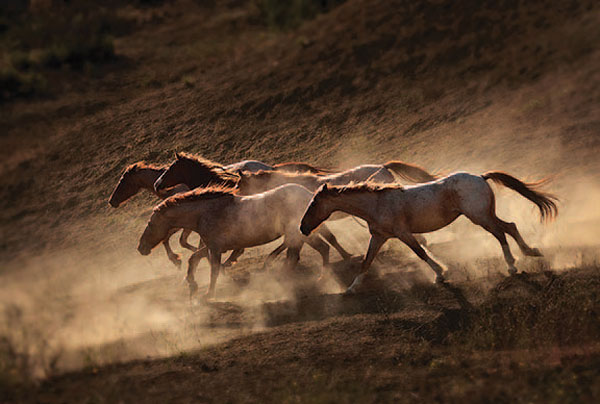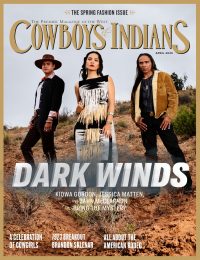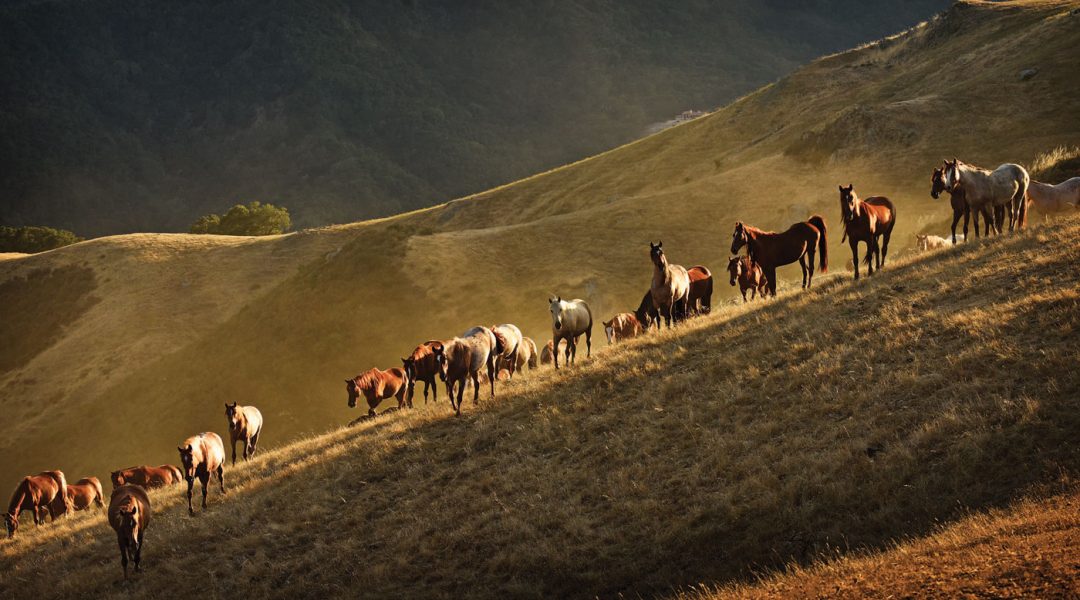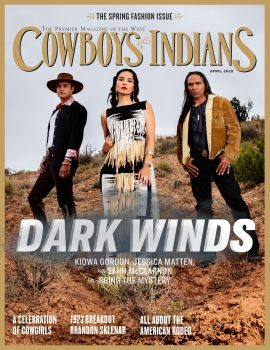Renowned equine photographer Tony Stromberg searches out and shares the beauty of the horse in all of its unencumbered incarnations.
Galloping free through backlit dust, standing majestically on a ridge at sunrise, posing (it would seem) in profile all mane and muscularity — for Tony Stromberg and his photography students, horses are healing.
A former advertising photographer, Stromberg found himself successful but burned-out. On the surface, he had everything anyone would want. “But my inner landscape was barren, and I began searching for my lost spirit,” he says. That search led him to the teachers that would show him the way back to himself: horses.
Following their lead and the light, Stromberg reinvented and re-energized his life. He has since built a body of work, including four books, that shows the deep and transformative connection to horses he has developed over the past two decades. Today, Stromberg teaches photographers to make that connection and capture it in images at equine photography workshops he conducts around the world. C&I caught up with the acclaimed equine photographer during one of his workshops in Europe to talk about horses through the lens.
Cowboys & Indians: Your passion for photographing these remarkable animals has taken you around the world, and you’ve taught equine workshops everywhere from California and Colorado to France and the United Kingdom — even Tunisia.
Tony Stromberg: I literally just finished a workshop in Cornwall, U.K., yesterday, and it was a pretty interesting and varied experience. I like to provide a really good variety in my workshops, meaning a variety of different horse breeds, as well as a variety of different locations and environments in which to photograph them. In this particular workshop, we photographed Arabian horses, as well as the “wild” ponies of Exmoor in their native habitat. We photographed some Spanish horses, and we photographed some Shire draft horses, reputed to be some of the largest horses in the world.
I am pretty much an open book when it comes to sharing what I have learned. Having a playful and experimental attitude is really important and something we have forgotten as adults, so I feel it is important to cultivate this in people.

C&I: When you were so burned-out in the 1990s, how did your first encounters with horses help?
Stromberg: Oh, my, that is a long story, but I will try to keep it simple. I spent 20 years doing advertising photography, photographing just about every subject matter you can imagine: food, fashion, architecture, and even technology. What happened over a long period of time was that I became so good at being a chameleon — conforming to others’ wishes and needs — that I eventually lost touch with my authentic self. I was pretty lost and depressed. Over the course of a year or two, horses helped teach me who I was, but, more accurately, who I was not. Through their intolerance for falseness, they showed me a path back to my true self, to my integrity, to my soul.
C&I: You have a real feel for capturing the right moment to make these majestic animals come alive. Tell us a bit about your process.
Stromberg: My “process” is multifaceted. Through years of doing studio photography, I developed a really strong sense of lighting. Photographers are artists that start with a black canvas and add light. That is what we are shooting — the light falling onto a subject, not the subject itself. I try to get people to see light in a more fundamental way. When I am on location, the first thing I look for is the light, the direction of the light, and where the light is in relation to the horse. Then I focus on the background. Once I have the light I like, I focus on the background. I love when the horse is lit from behind or from the side, dramatically, and I shoot against a very dark background. I guess that is my “signature” style.
C&I: Why do you always photograph these horses without riders, saddles, bits, or bridles — an homage to their sense of freedom?
Stromberg: Yes, exactly. It is truly an homage to their sense of freedom. And I am sure there is a personal element as well. I am not the type that likes to be contained, confined, or told what to do. So I guess what I photograph is an extension of my own psyche. A good friend told me recently at a workshop that “the camera sees both ways,” and I think there is some wisdom in that. I do not like any being to feel imprisoned, trapped, or enclosed, so ultimately it is a reflection of me, right?
Tony Stromberg’s equine photography workshops fill up fast. For current status (full, waitlist, open), visit tonystromberg.com/workshops.
From the February/March 2018 issue.












